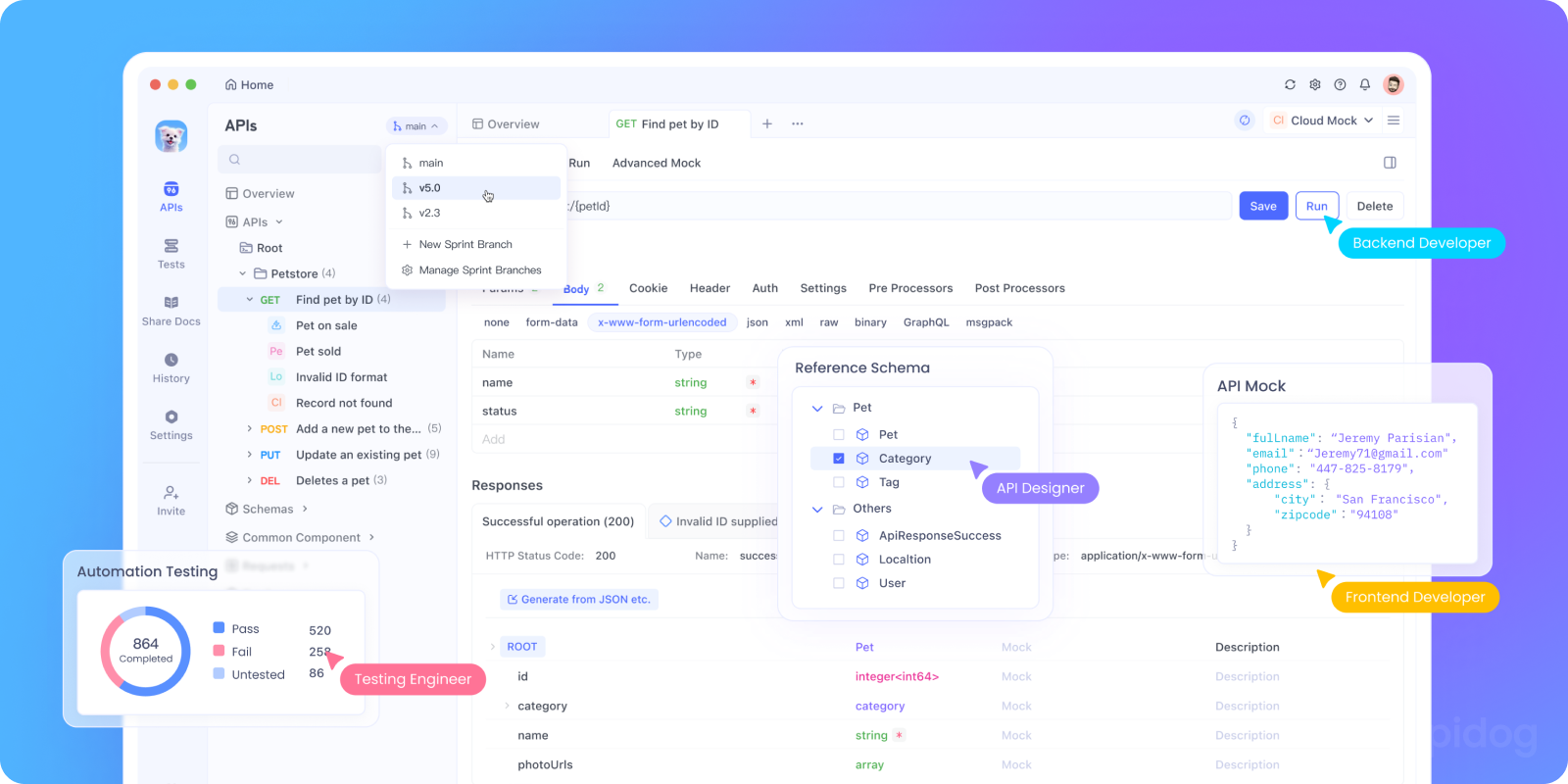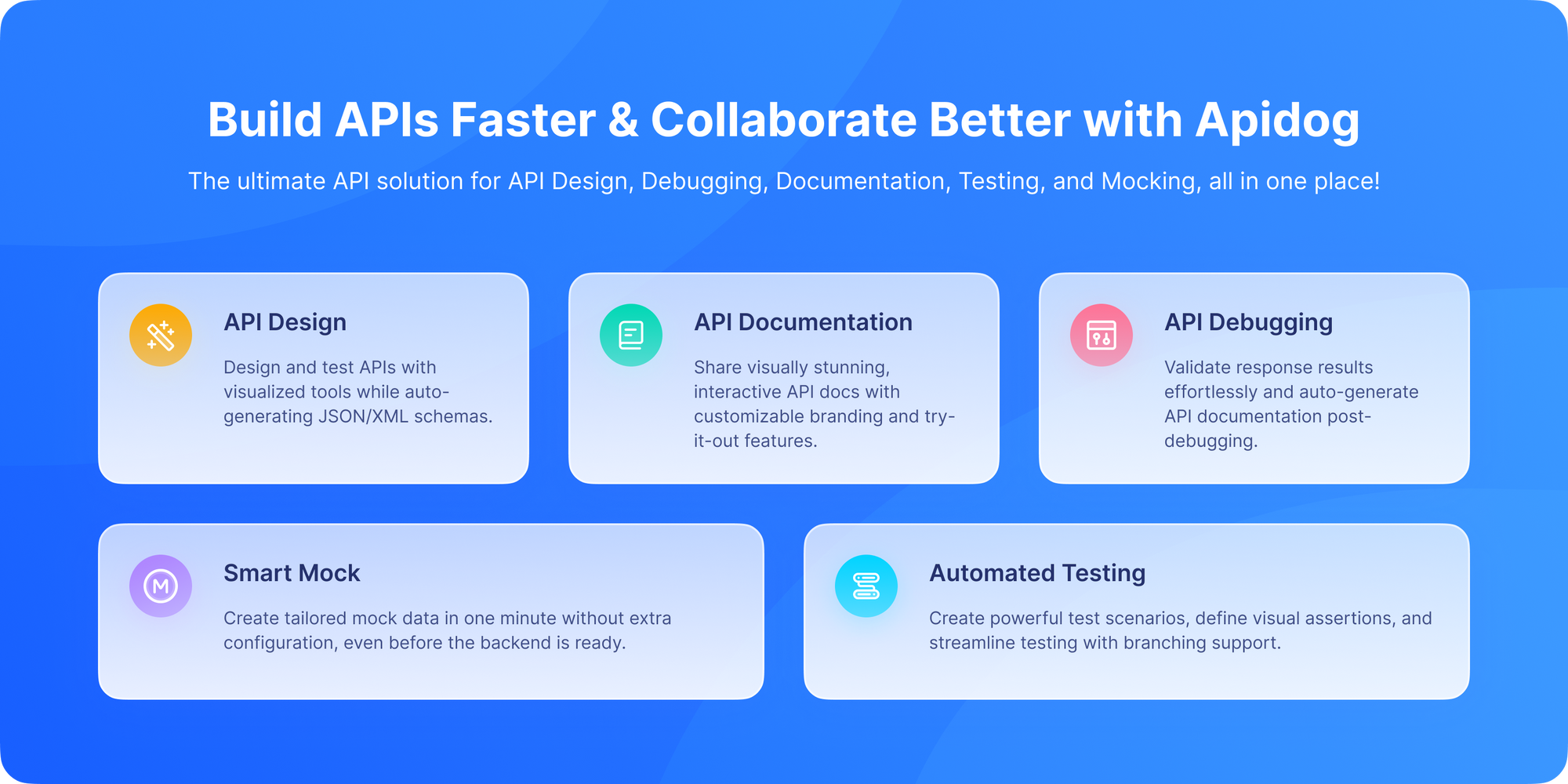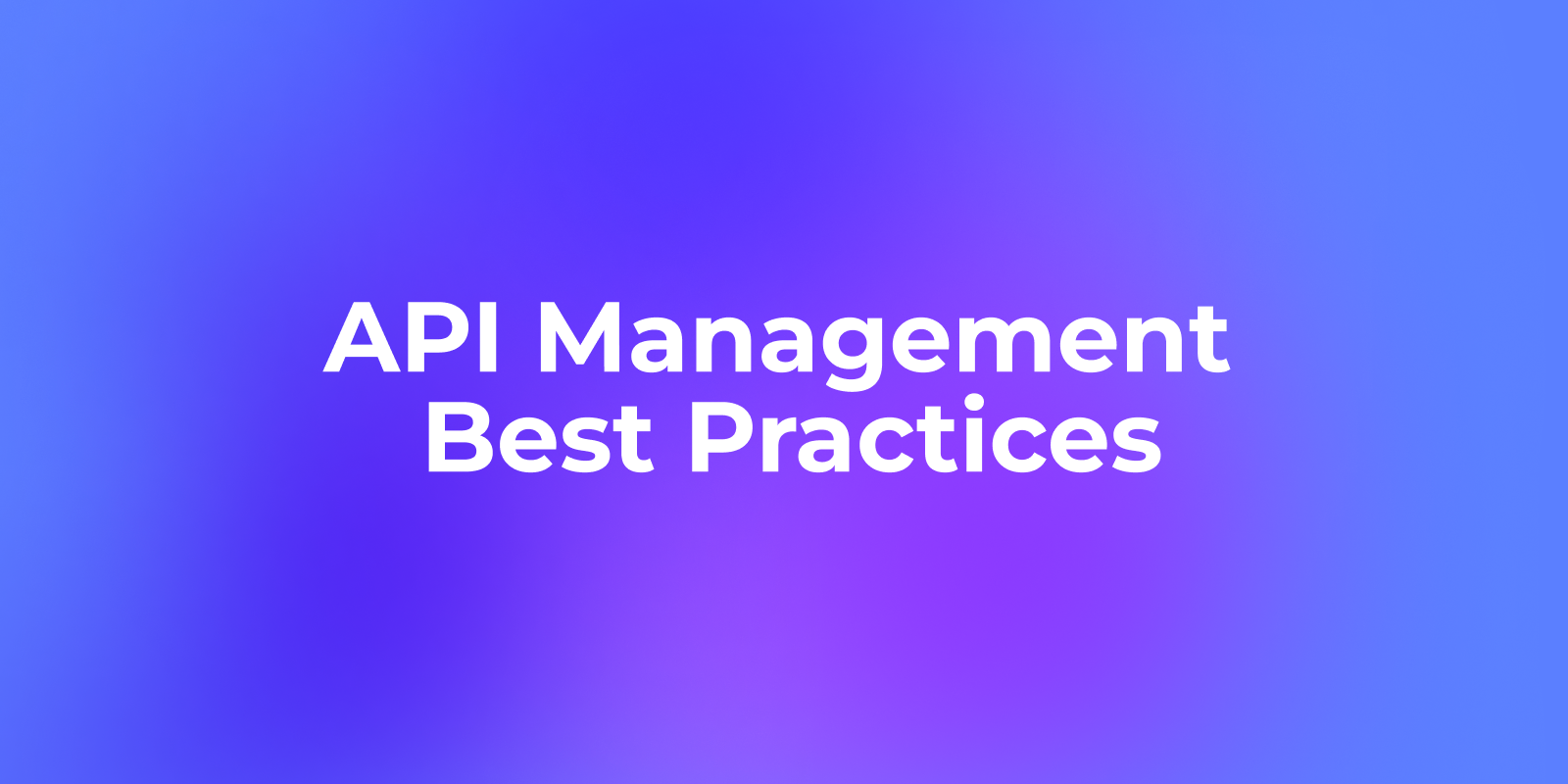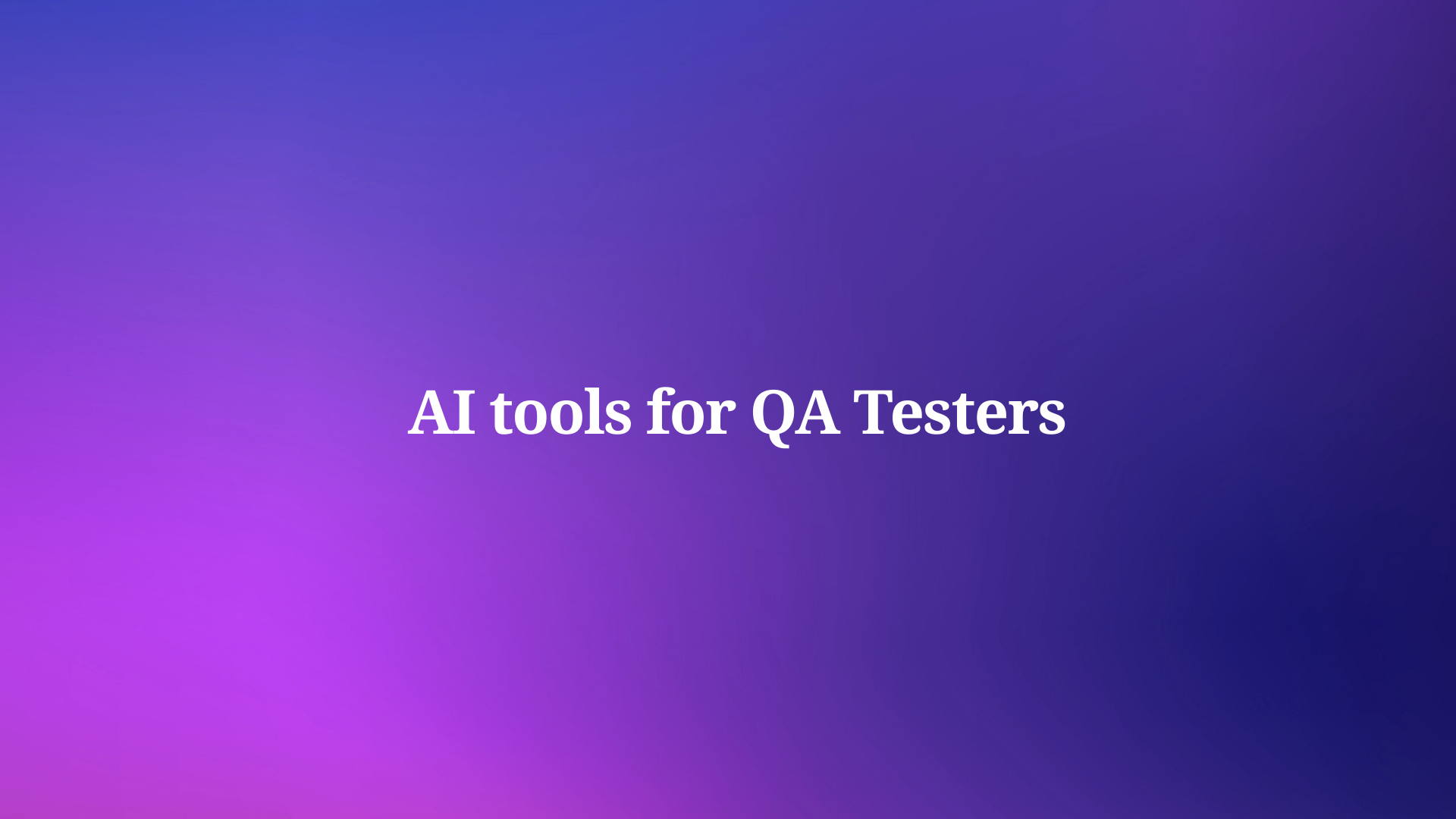If you work with APIs, whether designing, securing, or scaling them, you know it’s easy to get overwhelmed by complexity. API management isn’t just about controlling traffic; it’s about creating a seamless experience for developers, protecting your data, and driving business value. API management is a strategic process and when done well, it can seriously boost your productivity, developer satisfaction and system security.
From experience, adopting best API management practices transformed how I build and maintain APIs. They streamline development, improve security, and maximize uptime while enabling new revenue streams.
But how do you know if you’re doing it right?
That’s where the best API management practices come in. In this guide, I’ll walk you through the most effective techniques that top teams use to design, manage, secure, and optimize their APIs.
Want an integrated, All-in-One platform for your Developer Team to work together with maximum productivity?
Apidog delivers all your demands, and replaces Postman at a much more affordable price!
What is API Management, Really?
Let’s start with the basics.
API management is the process of designing, publishing, documenting, securing, analyzing, and monitoring APIs in a scalable way. It’s not just a dashboard or a gateway. It’s a strategic discipline that ensures your APIs are useful, reliable, and secure over time.
It includes:
- API design and modeling
- Access control
- Usage policies (quotas, rate limits)
- API versioning
- Documentation
- Developer onboarding
- Monitoring and analytics
- Security enforcement
Good API management means:
- Seamless developer onboarding
- Secure and flexible authentication
- Controlled and optimized traffic
- Clear, real-time performance insights
- Easy evolution with backward compatibility
- Governance and compliance across multiple stakeholders
Poor management leads to security risks, integration headaches, and missed opportunities. So yeah, it's a lot, but it creates a smooth experience for developers and consumers alike when done right.
Why Best Practices Matter
Here’s the thing: without best practices, your APIs can quickly become a mess.
You might face:
- Broken integrations
- Security vulnerabilities
- Poor developer adoption
- Inconsistent standards
- Difficulty scaling your API strategy
Following best practices ensures you’re not just building APIs but building maintainable, scalable and secure digital products.
The Fundamental Pillars of API Management
According to leading experts and organizations, these four pillars form the foundation of strong API management:
- API Design: APIs must be intuitive, consistent, and easy to consume. Building clear contracts, endpoint definitions, and error handling ensures developers and your future self have a smoother experience.
- Security: Tight authentication, authorization, encryption, and threat detection are mandatory to protect data and business logic.
- Monitoring and Analytics: Understanding usage patterns, performance bottlenecks, and error rates enables proactive improvements and SLA assurance.
- Governance and Lifecycle Management: As APIs evolve, managing versions, deprecations and access rights avoids breaking apps and keeps teams aligned.
API Management Best Practices to Follow
1. Design First, Always
Too often, teams rush into writing code for APIs without thinking about how those APIs should look, feel, or function.
Try to think like a developer consuming the API. Clear documentation, proper naming conventions, predictable error codes, and RESTful principles make a world of difference.
- Use OpenAPI or other standard schema formats
- Provide examples for requests and responses
- Define consistent pagination, filtering, and sorting conventions
- Design with backward compatibility in mind to avoid breaking existing clients
- Implement intuitive error handling with clear messages and codes
Here’s the smarter approach: design your APIs before writing any backend logic.
Why "Design First" Works:
- Helps catch design issues early
- Promotes team collaboration
- Enables mocking for frontend teams
- Leads to consistent, clean API structures
Tip: Use tools like Apidog that support visual API design and automatic documentation generation. This keeps everyone on the same page before a single line of code is written.
2. Documentation That Doesn’t Suck
Let’s be honest, bad documentation is one of the most frustrating things for developers.
So if you want people to actually use your APIs, you need clear, up-to-date, and interactive documentation.
What Great API Docs Should Include:
- Request/response examples
- Authentication details
- Error codes and descriptions
- Sample code snippets
- Interactive “try it” functionality
With Apidog, your documentation is automatically generated from your API design. Plus, it stays updated every time you change your API spec. That’s a huge win for developer trust and usability.
3. Authentication and Authorization Done Right
Your API is only as secure as its weakest point. Don’t make that point authentication.
Best practice? Always secure your APIs. Public doesn’t mean open.
Options to Consider:
- OAuth 2.0 for third-party apps
- API keys for internal projects
- JWT (JSON Web Tokens) for stateless identity
- Role-based access control (RBAC)
Whatever you choose, be consistent and never roll your own crypto or auth mechanism seriously, don’t.
Pro tip: Apidog integrates with secure token authentication, making it easier to test and simulate protected endpoints.
4. Versioning Strategies That Save Your Future Self
Here’s a scenario you want to avoid: breaking all your users’ apps because of one small API change.
The solution? Version your APIs. Always.
Common Versioning Methods:
- URI-based:
/v1/users - Header-based:
Accept: application/vnd.myapi.v2+json - Query param:
?version=2
URI versioning is the most common and easiest to implement, though others may be more flexible in certain cases.
By planning for versioning early, you prevent massive headaches later when you inevitably need to make breaking changes.
5. Rate Limiting, Throttling, and Quotas
Your API isn’t infinite. You need to protect it from abuse and ensure fair usage.
That’s where rate limiting and throttling come in.
Key Concepts:
- Rate limiting = Maximum requests allowed in a set time period.
- Throttling = Delaying or denying requests once the limit is exceeded.
- Quotas = Total request limits over a longer timeframe (e.g., per day/month)
These help you avoid:
- API abuse
- Infrastructure overload
- Unexpected cloud costs
Set sensible defaults, but allow customization per app or user tier.
6. Monitoring, Logging and Observability
You can’t improve what you don’t measure.
Monitoring and logging give you insights into how your APIs are being used and where things go wrong.
What to Track:
- Request volume
- Error rates
- Latency
- Response codes
- Auth failures
- Third-party dependencies
Use centralized logging and alerts to spot trends or anomalies before they impact users.
Tools like Apidog offer built-in monitoring that simplifies tracking and reporting, so you stay in control.
7. Don’t Forget Developer Experience (DX)
You’re not just building APIs for machines. You’re building them for developers.
That’s why DX (Developer Experience) matters so much.
Best Practices for Great DX:
- Clean, consistent naming
- Helpful error messages
- Interactive sandbox environments
- Clear onboarding instructions
- SDKs and code samples
Make it easy for developers to start fast and stay productive.
With Apidog, you get an integrated developer portal, mock server and instant test suite all things that make the developer experience so much smoother.
8. Embrace the Full API Lifecycle
APIs aren’t “set it and forget it.” They're living things.
The full API lifecycle includes:
- Planning & design
- Development
- Testing
- Deployment
- Monitoring
- Iteration & deprecation
Use a platform (like Apidog) that helps you manage this entire lifecycle, not just one part of it.
This holistic approach avoids silos and keeps your APIs healthy over time.
9. Use the Right Tools (Spoiler: Apidog Helps)
Trying to manage APIs without the right tools is like trying to build a house without power tools.
What You Need:
- API design UI
- Mock server
- Automated documentation
- Test automation
- Request/response inspection
- Role-based access controls
Apidog brings all of these features together. Instead of juggling Postman, Swagger, and custom scripts, you can use a single tool to manage the full lifecycle and keep your team in sync.
10. Automate Everything You Can
Manual tasks = errors + delays.
Automate things like:
- Test cases (unit, integration)
- CI/CD deployments
- Security scans
- API spec validation
- Documentation updates
When your API process is automated, it’s more consistent, more secure, and faster to release.
Many teams use tools like Apidog to run automated test suites and validate API schemas as part of their CI/CD pipelines.
11. Make Feedback Easy and Fast
Don’t wait for users to complain on GitHub or email. Set up structured feedback loops.
- Add a feedback link to your API docs
- Monitor usage trends to detect drop-offs
- Use surveys or issue trackers
- Add a third-party chat app to your API docs so users can message you directly.Ask ChatGPT
This lets you evolve your APIs based on real-world use, not just internal assumptions.
How Apidog Elevates API Management Best Practices

If you want to apply everything we talked about without needing five different tools, Apidog is the perfect choice. It’s free to download and gives you a complete API management in one elegant platform:
- API Design & Documentation: Create and maintain OpenAPI specs with ease, complete with dynamic docs.
- Testing Automation: Secure APIs with no-code automated functional and performance testing integrated right into development.
- Mock Servers: Speed up client development with realistic mock data before backend completion.
- Collaboration: Share APIs with teammates, assign issues, and track progress effortlessly.

I cannot overstate how much Apidog reduces tool juggling, improves our quality and shortens time to market.
Advanced Recommendations to Future-Proof Your API Management
- Adopt AI-driven monitoring and anomaly detection to catch threats or failures early.
- Invest in Trust security models for internal and external APIs.
- Embrace GraphQL and asynchronous APIs while managing them with your API platform.
- Prepare for edge computing to reduce latency in distributed applications.
- Experiment with API monetization to turn your APIs into revenue sources.
- Prioritize sustainability and green software principles in your API hosting and usage.
Build Better APIs with Best Practices
Effective API management fuses design, security, analytics, and collaboration into one powerful practice. By prioritizing user-centric design, embedding security, analyzing behaviors and aligning teams with developer portals, you create APIs that scale and evolve with your business.
And remember, tools matter. My daily recommendation is download Apidog for free to unite these best practices into a single, easy-to-use platform that accelerates your API success from design through monitoring.
Best API management practices are more than buzzwords they’re the blueprint for building successful, scalable and secure APIs. Whether you're just starting out or leading a large dev team, applying these principles can drastically improve your outcomes.
To recap:
- Design first
- Write great docs
- Secure everything
- Plan for versioning
- Monitor and limit usage
- Prioritize developer experience
- Use the right tools (hint: Apidog!)
- Automate and listen to feedback
Start applying even a few of these, and you’ll notice the difference.



